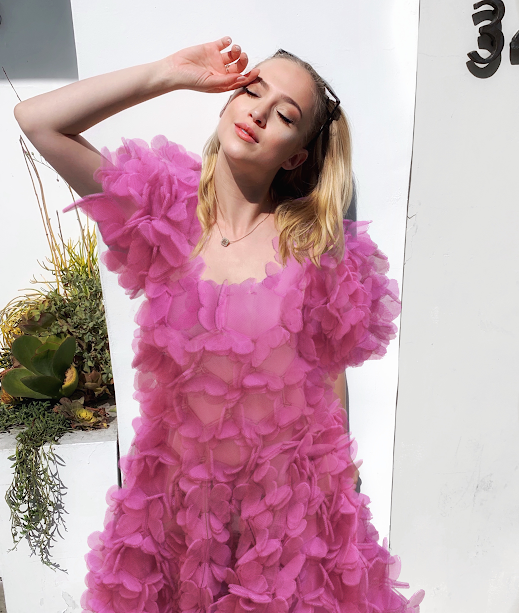You Should Be Filling Your Wardrobe With Digital Fashion. Here’s Why.
Fashion powerhouse Balenciaga debuted their very first video game, “Afterworld: The Age of Tomorrow,” to great fanfare in December 2020. Entering the game online, users embark on a quest through a dystopian future environment where they can simultaneously browse and shop the house’s latest collection. Although this is not the first time fashion has been found in the gaming world—Louis Vuitton created a capsule collection that was featured in “League of Legends” in 2019, and games like “The Sims” have incorporated customizable outfits for their avatars for many years—it is the first time that a fashion game was marketed to a general mass audience. Digital fashion has an extensive history in the gaming world, but it has recently moved beyond avatars into the digital world of non-gamers as well. Virtual filters, fittings, and clothing are becoming a regular part of our everyday lives, capturing our attention and further drawing us into the digital future.
Let's start at the beginning: what is digital fashion? Unlike IRL (“in real life”) fashion, it is garments and accessories that are made and/or used via computer technologies and 3D software. In the design side of the industry, digital fashion can serve as the first step for physical garment design and the sampling part of the production process. When creating a new piece, designers can incorporate digital fashion into the production process by constructing a prototype using CAD design software. On the consumer side, we can find digital fashion in the form of filters that can dress up our online persona, whether in a video game (e.g., “Second Life,” or “Animal Crossing”), in a messaging app (i.e., Memoji), or on social media. Instagram is a prime platform to showcase digital garments that are customized to the wearer’s body, yet made with a quick turnaround time. After choosing a digital garment, the user uploads a photo of themselves onto which the digital fashion company fits it, sending it back to the user to post to their account. In short, digital fashion is an umbrella term that refers to all garments living in the digital world, whether made to create prototypes for brands or dress people directly.
“Digital fashion is an umbrella term that refers to all garments living in the digital world, whether made to create prototypes for brands or dress people directly.”
As an emerging field, digital fashion is changing quickly and drastically. While no one can say for sure what the landscape will be like in a decade, we already know that it is increasingly tapping into ideas of self-creation and expression while also addressing issues in both social and environmental sustainability. Fashion is a major part of culture, but we must also be aware of its negative social and environmental effects. Just think about the poverty that fast fashion’s millions of factory workers face, or the giant landfills of clothing that are being filled each year. Could digital fashion be a solution to embrace creative self-expression and conscientious shopping at the same time? Roei Derhi, co-founder and designer of the digital fashion house Placebo says yes. “We believe that digital fashion is the beginning of how people define humans in the 21th century: digital fashion is genderless, sizeless and ageless— it can free your true self and celebrates creativity and diversity in the best way,” says Derhi.
Socially, digital fashion can be an immensely important tool for disadvantaged, marginalized, and minority groups in society. We can use digital fashion to adapt our online personas to articulate how we wish to be seen, and break through the barriers imposed on us by others. It is a space where the physical characteristics and sexual orientation of both those who create and those who wear digital fashion are irrelevant. Championing the advancement of women, minority groups, and the LGBTQIA2S+ community, one of the leading digital fashion studios, the Institute of Digital Fashion (IoDF), is home to Digi-GxL, a support network that focuses on collaboration, skill sharing, and education. IoDF also makes sure to not only represent but also pay their workers fairly and does not take on any jobs or clients that go against their values. “We are working to democratize the landscape of digital, by offering services as part of a philanthropic program of support so everyone can access digital tools and our services,” say founders Cattytay and Leanne Elliott Young.
Digital fashion can also foster equality across different social groups. While some IRL fashion can be expensive to make and hard to access due to high price points, digital fashion can be made and sold for much less. For example, Replicant Fashion, a Russia-based digital store, has digitalized collections from Alexander Terekhov. While the designer, one of Yves Saint Laurent’s former students, usually sells his physical couture dresses for upwards of $10,000, the digital ones at Replicant Fashion sell for $55. Also, while IRL fashion is made in limited quantities, abundance is easily achieved online. If a garment could be made once, it can be easily replicated ten thousand times for different users, and at a lower cost, providing the possibility for more people to experience it.
Digital fashion can also provide solutions to some of the major environmental problems created by IRL fashion. By limiting production of physical garments we can drastically cut down on the amount of pesticides used to grow fibers and reduce hazardous plastic microfibers from polluting our natural resources. We can also reduce the amount of clothes that are sent to landfills or, even worse, burned, polluting the air we breathe. Since shipping and handling costs can be high, returning items back to inventory can easily eat up profit margins, incentivizing retailers to eliminate rather than feed them back into the supply chain. Rather tellingly, in 2020, Amazon and Walmart announced that they no longer require goods to be returned for refunds, effectively shifting the problem of unwanted goods onto consumers. According to Replicant Fashion, part of their solution is a “virtual fitting room that will allow people to try on many clothes online in real-time. Now 50% of items in fashion are being returned to a seller and destroyed because it’s cheaper to burn them then to try selling them again. Digital makes the fashion industry more eco-friendly and responsible.”
“Shopping digital fashion can become a great way to reduce our negative environmental footprint without giving up the thrill of buying new clothes.”
DressX, a retailer that carries brands from all around the world, has a goal “to replace at least 1% of the traditional fashion industry (150 billion items of clothes produced every year) with the digital alternative for the cases when consumers buy clothing for content creation.” What’s their reasoning? “For the clients who care about our planet and who are striving to decrease the levels of pollution created due to overproduction and excessive consumption of the clothes, shopping digital fashion can become a great way to reduce their negative environmental footprint without giving up the thrill of buying new clothes.” Through their partnerships with influencers, they are also able to advocate for issues like energy reform. For example, they’ve collaborated with model and nuclear power activist Isabelle Boemeke on the “Decarbonize” collection to raise awareness and educate people on clean sources of energy.
These initiatives are only the beginning of a quickly growing and incredibly alluring part of the fashion system. We now have online dates, virtual work gatherings online, even remote style consultations; since we have customizable Zoom backgrounds, we should have quickly and easily changeable Zoom outfits as well. Although ‘working from home’ is part of the new normal, fashion can still be part of our everyday life. What's more, these new options can bring the fun of fashion to people while providing budget- and environment-friendly solutions. Digital fashion could help democratize society, amplify our capabilities, and even help the planet heal.
All images courtesy of DressX.
Fashion Forward, a New York-based non-profit think tank, was established in 2020 by Doris Domoszlai-Lantner and Sara Emilia Bernat to explore complex issues in culture, society, technology, and sustainability through the lens of fashion. This essay is excerpted from their eponymous zine Fashion Forward, which will be available for pre-order on their website and via Kickstarter in December. To learn more about Fashion Forward, visit their website www.fashionforward.io, and find their programming on LinkedIn.






